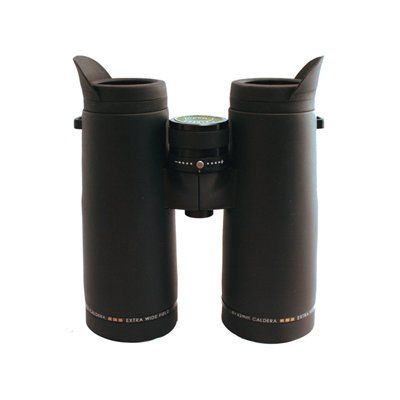
I had the opportunity to test these binoculars for a couple weeks this summer, while their owner, Cameron (cmeier117) was taking care of a new addition to his family.
I hauled them around with me and used them for a variety of hunting-like activities including hiking, camping, fishing, and bird watching at Flathead Lake in northwest Montana. I was also able to test the binoculars for field of view in my home. Believe it or not, I have tested a few models that varied a little bit from the published specs.
For those that don’t know, Kruger is a company based out of Sisters, OR, that has been designing and manufacturing optics for years. They have done some OEM work for other brands, and are currently selling a variety of optic products under their own name.
Kruger currently manufactures a very interesting tactical scope right in Oregon, but their binoculars are manufactured in a Chinese facility overseen by Kruger.
The Caldera is their top-of-the line binocular line that sits at the real-world price of about $400. Of course, this puts them into a crowded field of comparable binoculars including the Zen Ray ED3, Vortex Talon HD, and Theron Wapiti APO-ED.
I did not have a 8X42 model to directly compare to the Caldera, so I made some general comparisons with my trusty 10X43 Zen Ray ED2s I have been packing around for the last couple of years.
So, how did they do?
The Caldera’s build quality was pretty good for the price range. The armor was well fitted. It was smoother than I preferred, but of good quality none-the-less. The eyecups were unusual in that they were rather wide and included rotating eye shields to block side light interfering with the image. The eye shields were a bit finicky, but they did improve the viewing experience. They were especially helpful given the wide eyecups would allow more side light, if they did not have the eye shields. They made putting the rainguard on a little tougher, though. The hinge was a single hinge/ open bridge design right by the focus wheel. This is a very comfortable configuration that allows one to get his fingers around to the barrel for good one-handed use, which I really like for horseback use. The focus wheel was short and metal with a thin, lightly textured rubber ring around it. With bare hands it was comfortable and precise, but kind of hard to operate with gloves on.
When I got the Caldera’s I was only able to get a single image with the diopter in the rightmost position. I found this odd, since my eyesight is pretty balanced and with most models of binoculars I keep the diopter either at the “0” setting or plus or minus a couple of clicks. Still, I had a good, sharp image, so it was off to check out the performance.
The Calderas provide an image that is quite flat, with only a mall amount of pincushion distortion and field curvature noticeable. The sweet spot is quite wide for this price range, extending outward to about 80% of the image. Softening at the edges was mild. Chromatic aberration control was good in the center, with steadily more fringing visible in high-contrast areas as you moved your eye towards the edge. At the edge it was pretty noticeable. Depth of field was adequate for the configuration.
Image sharpness was very good throughout the sweet spot, and I was able to easily discern plumage details on a pair of mallards paddling around Flathead Lake at around 100 yards. In low light, the Calderas did well as they should with their large exit pupil in the 8X42 configuration.
One big plus for the Calderas compared to their competition is their enormous field of view. I though Kruger may have been fudging the numbers on their advertising, but in fact the 8X42 model has a huge 438 ft/1000yds field of view, after I measured it. This is all the more impressive when you realize that the sweet spot is so wide that most of that picture window is a clean, sharp image. This is a real strong point for the binocular.
When I was taking the binocular outside for some photos for this review, I managed to drop them about three feet onto the sidewalk outside my home. When I picked them up, I immediately realized they had been knocked out of collimation. I contacted Walter at Kruger Optical and told him of my klutziness, and mentioned the diopter situation. Walter told me not to worry, and to send them in. I mailed them to Kruger. Walter followed up with me and advised the diopter mechanism had been defective, and Kruger had mailed Cameron a replacement. Walter assured me the diopter issue was an anomaly. I did see that Kruger’s customer service was excellent.
So where does the Caldera fit in?
The Caldera is an excellent-performing binocular for its price range. Its strong points are in field of view, resoluton, and sweet spot size. It could improve on CA control (The Zen Rays and Vortex have it beat in this area). The ergonomics are going to be a big difference between it and its competition. While it seems the Caldera was aimed at birders, I think hunters would prefer a more aggressive textured focus knob and armor for use in wet and cold conditions. However, some hunters may have a facial structure that favors the Caldera eyecup design over the competitors.
The Caldera is a good offering that should be considered by hunters in the $400 price range.
